PAST ISSUES
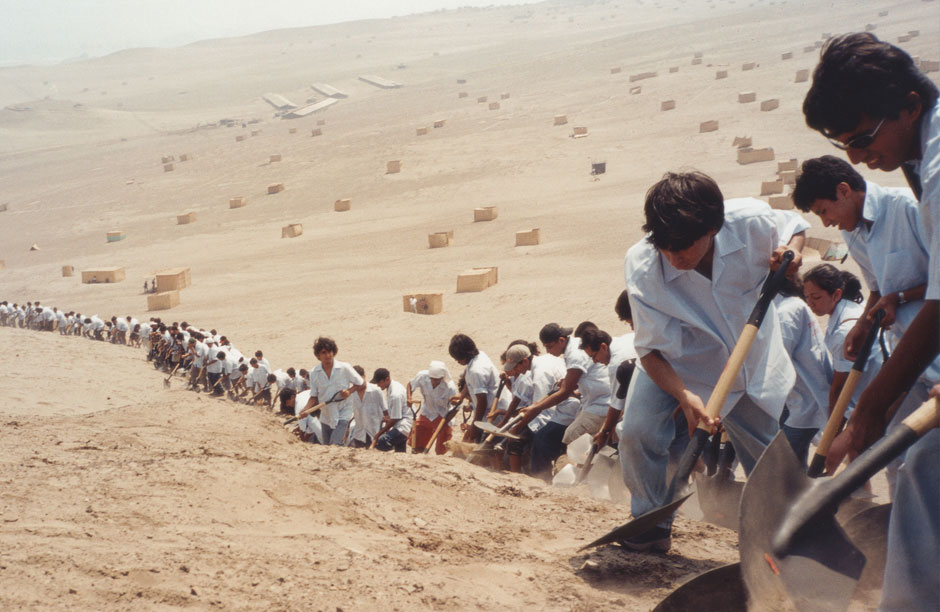 Students from the University of Lima shoveling sand in the Ventanilla desert just outside of Lima as part of an art intervention organized by artist Francis Alÿs titled "When Faith Moves Mountains" (April 11, 2002)
Students from the University of Lima shoveling sand in the Ventanilla desert just outside of Lima as part of an art intervention organized by artist Francis Alÿs titled "When Faith Moves Mountains" (April 11, 2002)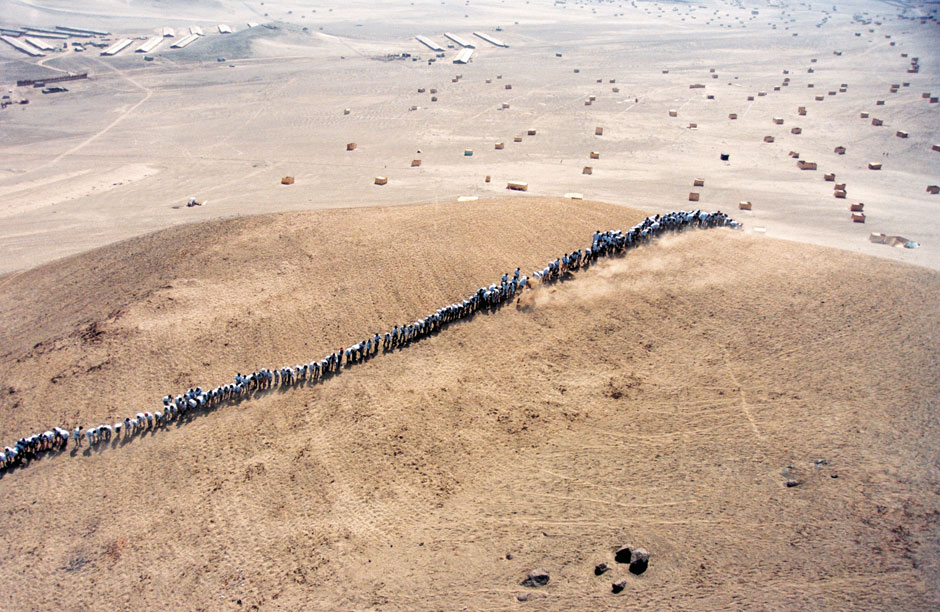 Aerial view of students in action for "When Faith Move Mountains" (2002). In the distance you can see the small living structures built by Peru's poor and displaced in the harsh landscape of the Peruvian deserts.
Aerial view of students in action for "When Faith Move Mountains" (2002). In the distance you can see the small living structures built by Peru's poor and displaced in the harsh landscape of the Peruvian deserts.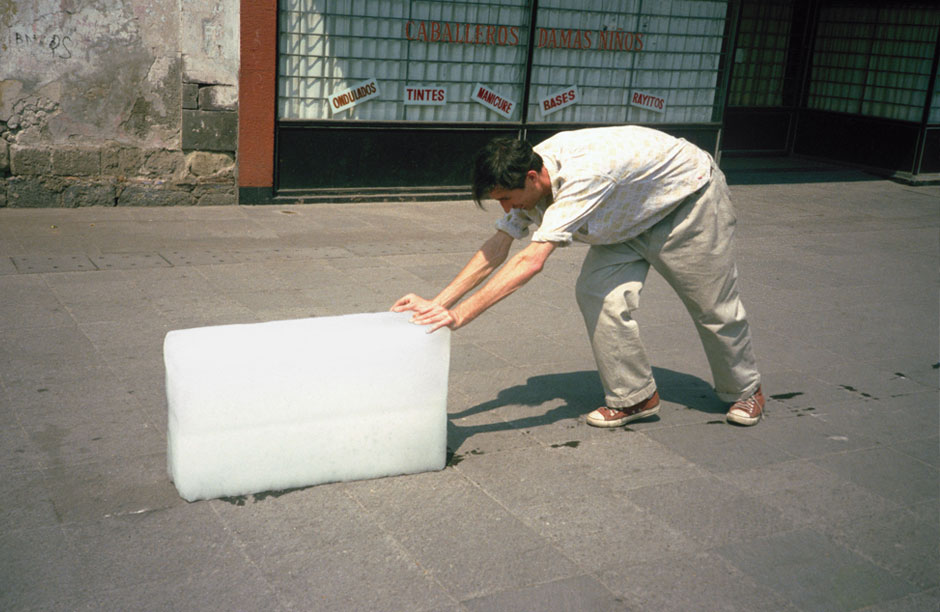 Artist Francis Alÿs pushing a block of ice through the streets of Mexico City for his work "Paradox of Praxis (Sometimes Doing Something Leads to Nothing)" 1997.
Artist Francis Alÿs pushing a block of ice through the streets of Mexico City for his work "Paradox of Praxis (Sometimes Doing Something Leads to Nothing)" 1997.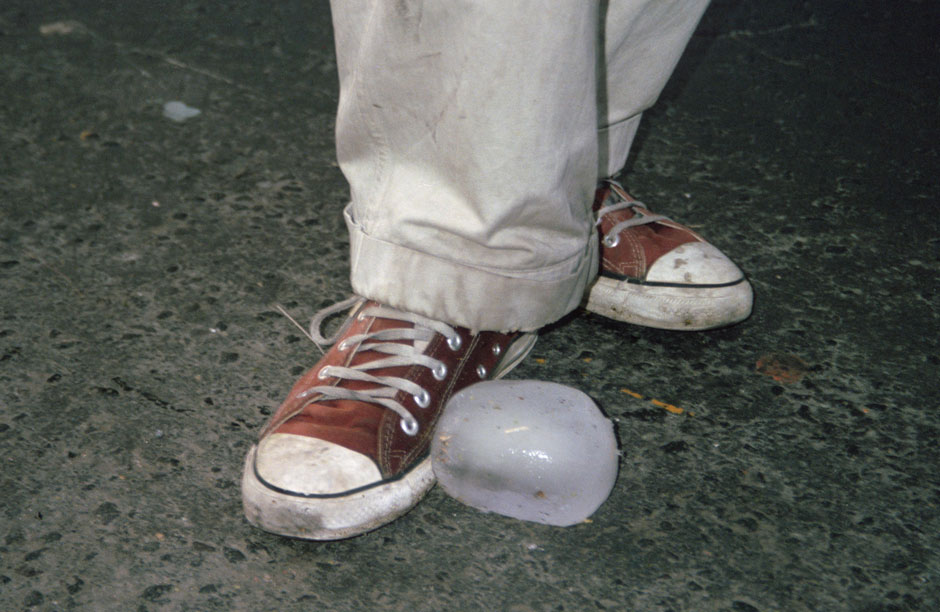 The end result of "Paradox of Praxis (Sometimes Doing Something Leads to Nothing)" 1997
The end result of "Paradox of Praxis (Sometimes Doing Something Leads to Nothing)" 1997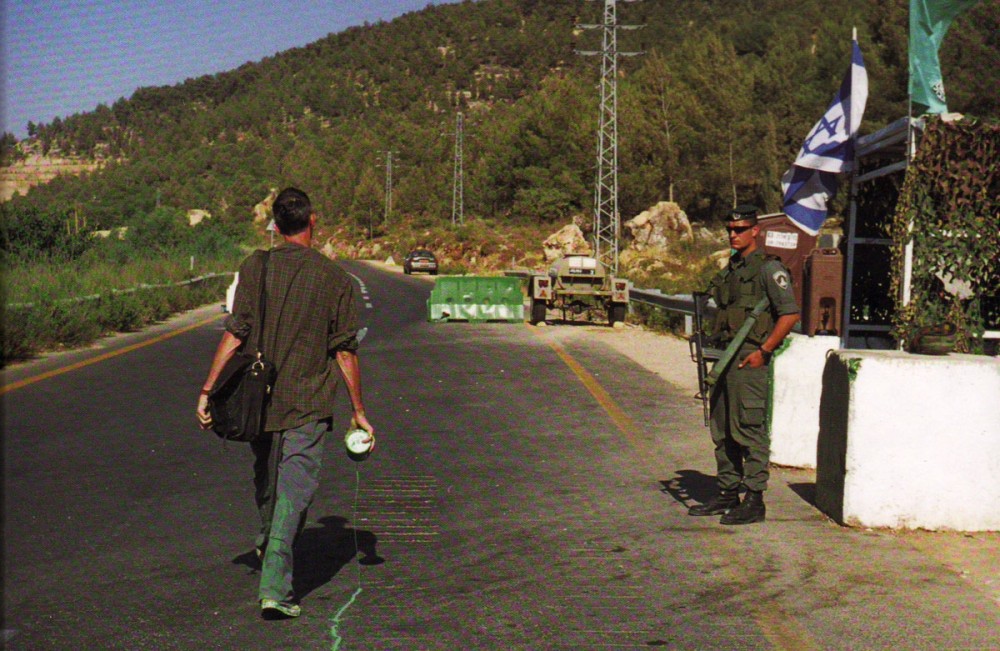 Artist Francis Alÿs walking the Israeli-Palestinian border with a leaky can of green paint for his project "The Green Line" (2005). In this video-still you can see him about to nonchalantly pass through an Israeli check-point.
Artist Francis Alÿs walking the Israeli-Palestinian border with a leaky can of green paint for his project "The Green Line" (2005). In this video-still you can see him about to nonchalantly pass through an Israeli check-point.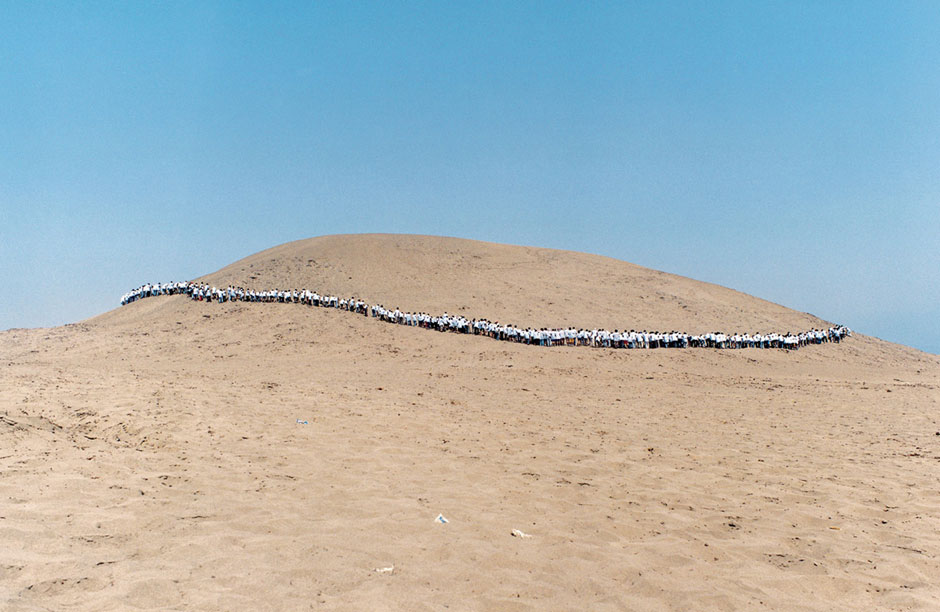 The final result of the 500-volunteer effort to move this sand dune in the Ventanilla desert for "When Faith Moves Mountains" measured a movement of 4 inches. The artist calls it "A Tiny Miracle".
The final result of the 500-volunteer effort to move this sand dune in the Ventanilla desert for "When Faith Moves Mountains" measured a movement of 4 inches. The artist calls it "A Tiny Miracle".
Cover Artist – Francis Alÿs
By Nicole DavisOn April 11, 2002, 500 volunteers (mostly students from the University of Lima) were supplied with shovels and asked to form a single file line at the foot of a giant sand dune in Ventanilla, a desert region just outside of Lima.
The group was gathered at the request of Belgian-born Mexico City based artist Francis Alÿs. His next request was for them to begin shoveling the sand from the dune’s rim as they climbed up the steep edge – shoveling every step of the way. Their task was to move the mountain.
“A desperate situation requires an absurd solution,” explained Cuauhtémoc Medina, the Mexican curator and friend of Alÿs who helped organize the project.
In 2000, when the artist traveled to Peru with Cuauhtémoc Medina two years before initiating “When Faith Moves Mountains”, he witnessed the political upheaval around the corrupt dictatorship of then president of Peru Alberto Fujimori.
In the streets the artist could feel the tension and the weight of hopelessness carried by the country’s citizens.
Yet, Alÿs did not choose to organize a project in the actual city of Lima. The desert of Ventanilla was chosen because it is part of a stretch of uninhabitable land just off the Peruvian coast that is known for harboring the makeshift villages of all the displaced and poor that cannot thrive within the country’s economy.
In the artists words, “Lima, a city of nine million people, is situated on a strip of land along the Pacific coast of Peru. The city is surrounded by enormous sand dunes on which shantytowns have sprung up, populated by economic immigrants and political refugees who escaped the civil war fought during the ’80s and ’90s by the military and guerrilla groups like Shining Path. After a week of scouting, we chose the Ventanilla dunes, where more than seventy thousand people live with no electricity or running water.”
The absurdity of attempting to move a mountain is very in line with the angle Francis Alÿs approaches the world through his work. He sees obstacles and oppression and begins with an action he knows he can take on – regardless of how insignificant or insane it may seem. In one of his early works “Paradox of Praxis (Sometimes Doing Something Leads to Nothing)” (1997), Alÿs pushed a large block of ice down the streets of Mexico City for hours until it was reduced to a puddle.
For another project in June of 2005, Alÿs walked from one end of Jerusalem to the other carrying a can filled with green paint. The bottom of the can was punctured with a small hole to allow the paint to drip slowly – forming a line along the perimeter of his steps. The path he followed was the infamous border that has sparked endless fighting and a rippling effect of war across the world: the line that divides Israel from the Palestinian territories.
Known as the “Green Line”, the line was originally drawn by Israeli-appointed Minister of Defense Moshe Dayan with a green grease crayon directly on a map of Palestine to demarcate the border of Israel after the 1948 Arab-Israeli War. Alÿs’s playful interruption went unnoticed as he climbed through backyards and tracked past check-points guarded by Israeli soldiers to make the line a physical presence.
When Alÿs exhibited the video documentation of the “Green Line” project at a gallery show in New York, along with works of art inspired by the Israeli-Palestinian conflict, these words were presented on the wall:
“Can an artistic intervention truly bring about an unforeseen way of thinking? Can an absurd act provoke a transgression that makes you abandon the standard assumptions on the sources of conflict? Can those kinds of artistic acts bring about the possibility of change?”
Alÿs was chosen for the cover of our “Action Heroes” issue because although he is an artist known for his paradoxical and absurd punctuations at the end of well-worn conflicts, somehow these small almost childlike acts present a new way of seeing and doing – a beginning.
As for “When Faith Moves Mountains” – this was no small act. “The dune moved”, Alÿs insists. “This wasn’t a literary fiction; it really happened. It doesn’t matter how far it moved, and in truth only an infinitesimal displacement occurred (4 inches to be exact) – but it would have taken the wind years to move an equivalent amount of sand. So it’s a tiny miracle. The story starts there.”
